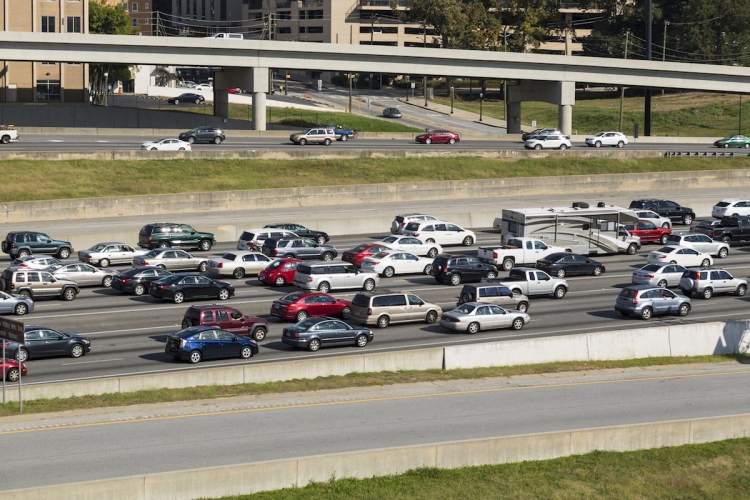Though it will still be months before the public learns which city will be home to Amazon HQ2, one thing has already become clear: This RFP process, arguably the most highly speculated business decision ever, has forced cities to take a hard look at their infrastructure. Local government officials are able to see what’s required to attract a behemoth like Amazon, with its 50,000 workers and up to $5 billion in construction dollars — and where they’re lacking.
No matter which city ends up with HQ2, it’s clear that things like a decent public transit infrastructure, mobility and accessibility, and fiber connectivity are going to be key to attracting leading technology enterprises and the young, talented workforce these companies employ. Cities need to become smart — rather than just serving as geopolitical regions, smart cities are connected systems that rely on information and IoT technologies to solve urban challenges more efficiently.
Atlanta has launched an innovative pilot to test smart city technologies, not in a lab or university classroom, but on the streets. The SmartATL project recently opened what it’s calling a “Smart Corridor” along the well-traversed throughway of North Avenue.
The approximately 2.3 mile corridor, officially launched in September, stretches from east to west, running through the campus of research university partner Georgia Institute for Technology. It’s close to the headquarters of large Atlanta employers like Coca-Cola. It contains a MARTA (Metro Atlanta Rapid Transit Authority, the public transit train system) station and 18 traffic intersections.
June 5th: The AI Audit in NYC
Join us next week in NYC to engage with top executive leaders, delving into strategies for auditing AI models to ensure fairness, optimal performance, and ethical compliance across diverse organizations. Secure your attendance for this exclusive invite-only event.
According to SmartATL, the project cost approximately $3 million and was funded by the Renew Atlanta Bond, a $250 million bond meant to improve Atlanta’s aboveground infrastructure. It’s also getting technical support from Together for Safer Roads, a global coalition of private companies aimed at improving road safety.
Though it’s a living project that will continue to be developed, the corridor already contains over 100 IoT-connected sensors, cameras, and devices to collect data on KPIs around things like mobility, safety, environmental factors, and overall efficiency.
Traffic is an obvious example — in the largest global traffic study to date, conducted by transportation analytics company Inrix in 2016, Atlanta ranked eighth in the world for traffic congestion; the average commuter spends almost three days out of the year stuck in congestion.
The city has tried a number of different projects in the past to alleviate its notorious gridlock. Last year they partnered with Waze to use the navigation app’s Connected Citizens Program to share real-time data. Following a major highway collapse earlier this year, the city also pulled Waze data to create a traffic data web interface that directs vehicles to less congested roads.
Now thanks to the smart corridor, the city is addressing traffic with new technologies, deploying an artificial intelligence-driven adaptive traffic signal system — connected video cameras and sensors at traffic lights — to collect data on flow of traffic, gridlock, and vehicle types.
Atlanta CIO Samir Saini says the system, which comes from a startup based in Pittsburgh, contains a connected thermal imaging camera to determine whether the occupants at the light are pedestrians, cyclists, or vehicles.
“Then based on that data, it determines what to adjust the signal timing to and then relays that information to adjacent traffic lights,” said Saini. “And if that proves to make a significant impact in improving travel time delay and flow, we’re going to go all-in and deploy it in a number of other areas of the city; particularly event spaces where traffic is a nightmare.” This technology could reduce travel times by up to 25 percent.
Saini says these type of systems are what would be needed to eventually help facilitate traffic flow for autonomous vehicles. In mid-September, an autonomous car successfully traversed the corridor.
“So that’s also pretty exciting because we’re laying down the foundation for what we see as the future of mobility once we have more connected cars, autonomous cars, in our city,” he said.
To analyze all this data and provide recommendations, Atlanta government partnered with researchers at Georgia Tech. The University hosts several smart city and IoT research groups, along with the Institute for People and Technology (IPaT).
Finally, the corridor can serve as a testbed for local startups and tech companies to test innovative IoT and Smart Cities technologies. Applied Information, a transportation systems company based in a metro Atlanta suburb, was selected to provide the connected vehicle infrastructure along the corridor, for example.
“We’re deliberately trying to find local companies because we get the double benefit of improving metrics along with promoting economic growth,” says Saini.
Saini is adamant that all of this won’t be limited to small testbeds for long — he says the pilots are actively being studied to determine which could be deployed at scale across the metro area. His department, along with others, is also actively pursuing a host of projects in big data, IoT, artificial intelligence, and machine learning to improve other urban challenges — public safety, crime, civic engagement, and more.
The Smart Corridor project will be showcased this December at the Annual Summit of the MetroLab Network, a national consortium of cities and universities that began as part of the White House’s Smart Cities Initiative. It could well serve as a model for other cities, particularly those with similar gridlock or transit efficiency issues, to experiment with technology solutions that can address these challenges.
Holly Beilin is the editor-in-chief of Hypepotamus, a publication that covers the southern innovation ecosystem.

